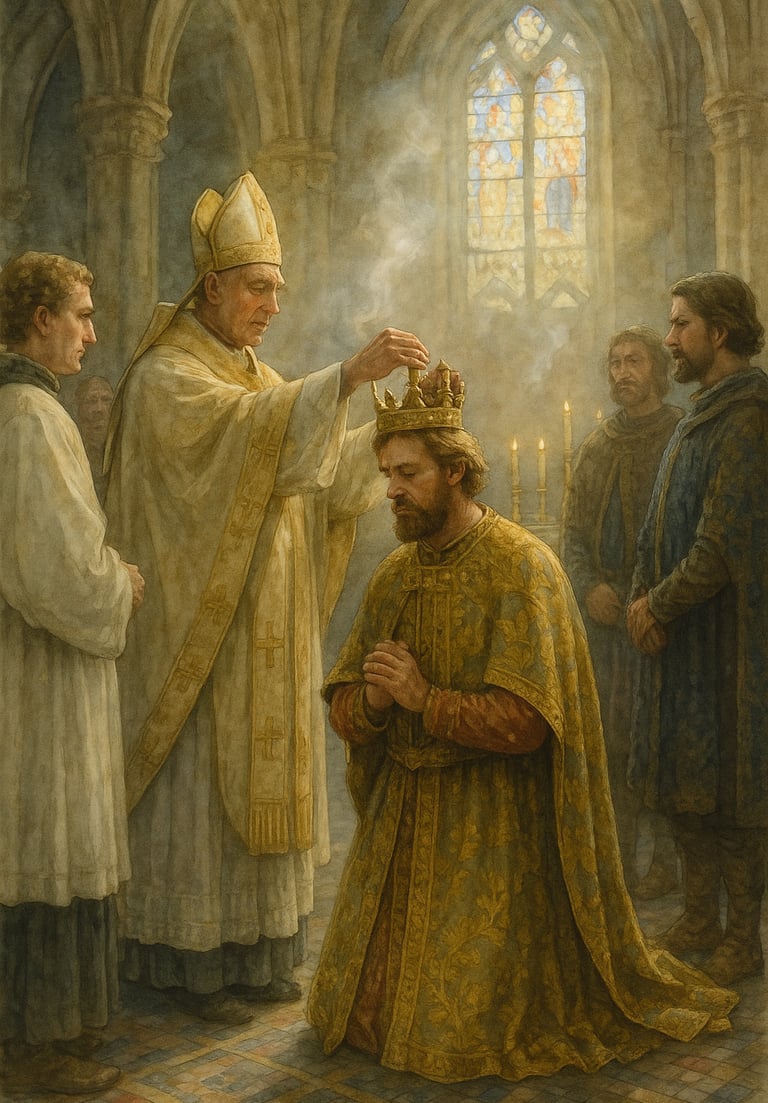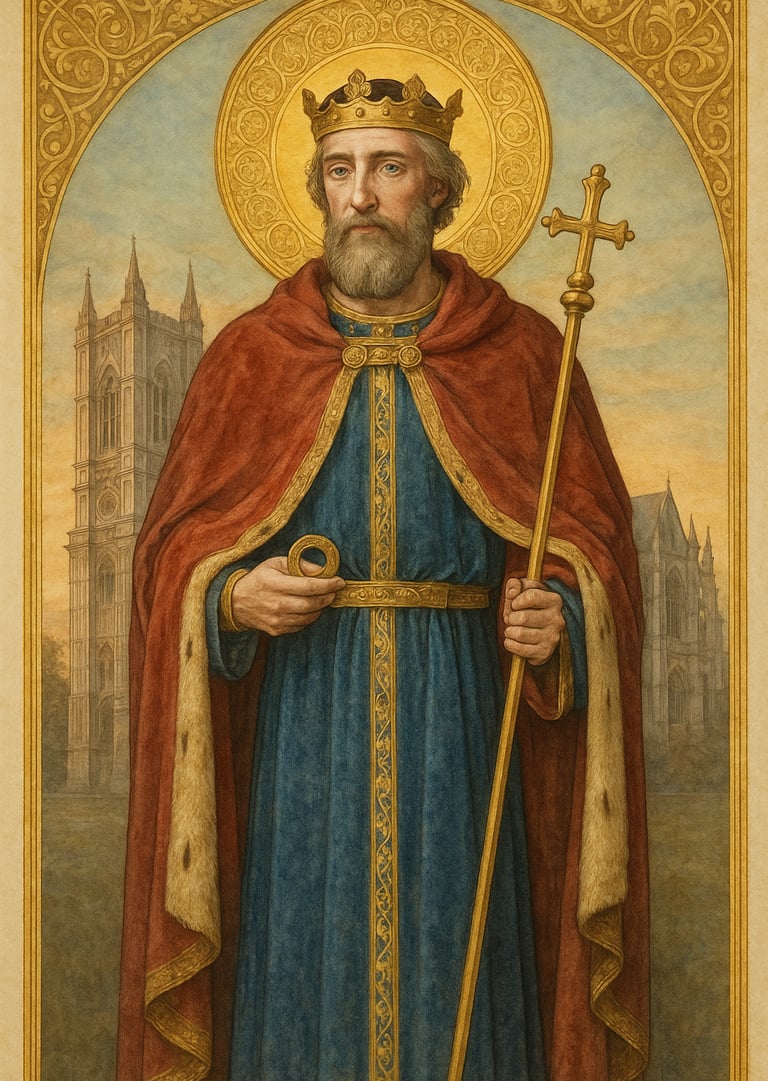Saint Edward the Confessor – The Gentle King of England
Feast Day: October 13 | Patronage: Difficult marriages, separated spouses, kings
Halo & Light Studios
10/13/20252 min read


Click Link for a reel of Daily Dose of Saints and Faithful Art:
https://youtube.com/shorts/n8LxZMXCByE
In the early eleventh century, England stood between two worlds: the fading age of the Anglo-Saxons and the dawning of Norman rule. Amid these tensions, God raised up a gentle monarch—Edward the Confessor (c. 1003–1066)—whose holiness would shine brighter than any crown.
Born the son of King Æthelred the Unready and Queen Emma of Normandy, Edward’s childhood was marked by turmoil. Viking invasions forced his family into exile in Normandy, where he grew up immersed in the monastic reform spirit that flowed from Cluny Abbey. There, Edward’s faith deepened; he learned to prize prayer over politics, virtue over vengeance, and mercy over might.
When Edward was called back to England and crowned king in 1042, the realm was weary from war and division. He ruled not as a conqueror but as a reconciler. While powerful earls quarreled for influence, Edward governed with patience and justice, earning the love of his people.
He lived a life of personal austerity uncommon for a monarch. Fasting, prayer, and daily Mass were woven into the fabric of his reign. Chroniclers tell that he never raised taxes to fund wars and was often seen distributing alms to the poor in person. His compassion and humility became legendary—virtues that would later give rise to the royal custom known as the “King’s Touch,” believed to heal scrofula through his prayer and blessing.
The world of Saint Edward was one of profound reform within the Catholic Church. Across Europe, the Gregorian Reform movement—led by popes such as Leo IX and Nicholas II—sought to restore holiness to the clergy, abolish simony, and protect the Church from secular control.
Edward’s reign reflected this same spirit of renewal. He promoted holy bishops, restored monasteries ruined by war, and modeled moral integrity in governance. His marriage to Queen Edith, though politically arranged, was lived in mutual respect and chastity—an image of sanctified marriage amid worldly ambition.
Edward’s most enduring gift to history was the construction of Westminster Abbey, begun around 1045 and dedicated to Saint Peter the Apostle. Built in the Romanesque style with Norman craftsmen, the Abbey became both a symbol of Christian unity and the heart of English spirituality.
He would not live long after its completion. Edward died on January 5, 1066, only days after its consecration, leaving no heir. His death ushered in the Norman Conquest—but his Abbey remained a sacred sign that holiness endures even when kingdoms fall. Miracles soon followed at his tomb, and Pope Alexander III canonized him in 1161.
Saint Edward’s life teaches that sanctity and leadership are not at odds. He ruled with a monk’s humility and a father’s tenderness, showing that true authority serves rather than dominates. In a time of feudal pride and ambition, he proved that mercy is stronger than the sword.
His quiet holiness bridged an era of war and peace, pagan raids and Christian renewal. Even after the Norman Conquest transformed England, his memory endured as the model of a Christian ruler—the “Confessor,” who bore witness to Christ not in blood but in virtue.


